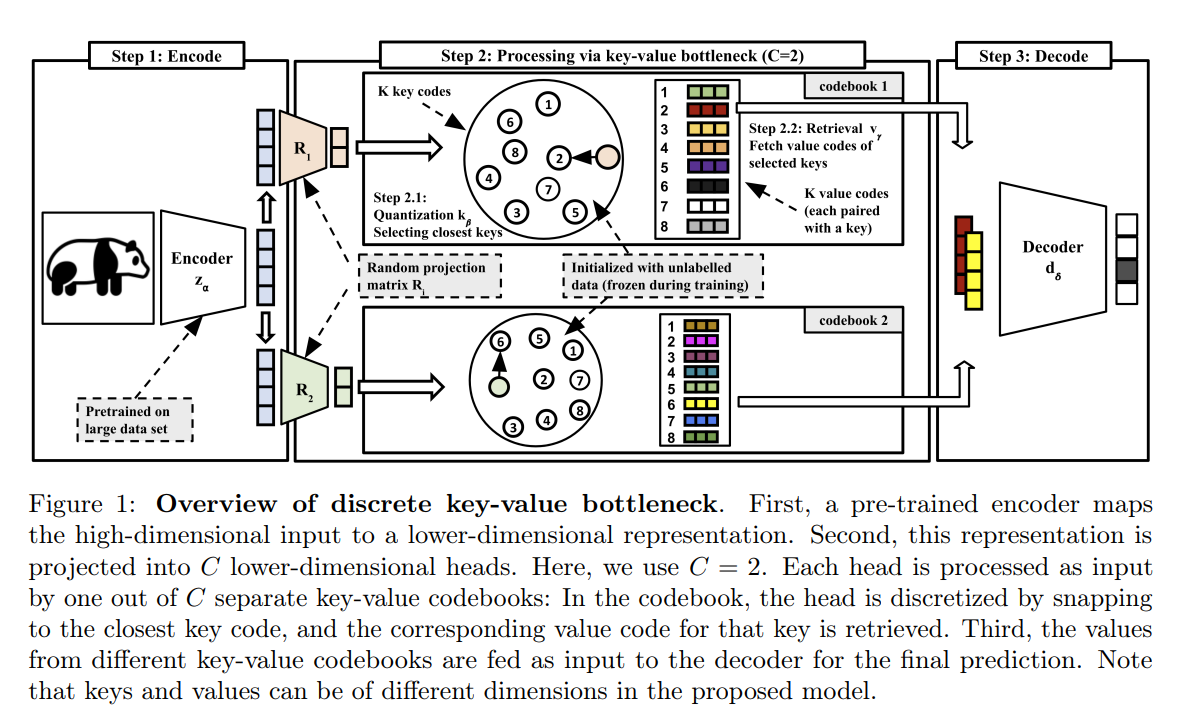Implementation of Discrete Key / Value Bottleneck, in Pytorch.
$ pip install discrete-key-value-bottleneck-pytorchimport torch
from discrete_key_value_bottleneck_pytorch import DiscreteKeyValueBottleneck
key_value_bottleneck = DiscreteKeyValueBottleneck(
dim = 512, # input dimension
dim_memory = 512, # output dimension - or dimension of each memories for all heads (defaults to same as input)
num_memory_codebooks = 2, # number of memory codebook, embedding is split into 2 pieces of 256, 256, quantized, outputs 256, 256, flattened together to 512
num_memories = 256, # number of memories
decay = 0.9, # the exponential moving average decay, lower means the keys will change faster
)
embeds = torch.randn(1, 1024, 512) # from pretrained encoder
memories = key_value_bottleneck(embeds)
memories.shape # (1, 1024, 512) # (batch, seq, memory / values dimension)
# now you can use the memories for the downstream decoderYou can also pass the pretrained encoder to the bottleneck and it will automatically invoke it. Example with vit-pytorch library
$ pip install vit-pytorchThen
import torch
# import vision transformer
from vit_pytorch import SimpleViT
from vit_pytorch.extractor import Extractor
vit = SimpleViT(
image_size = 256,
patch_size = 32,
num_classes = 1000,
dim = 512,
depth = 6,
heads = 16,
mlp_dim = 2048
)
# train vit, or load pretrained
vit = Extractor(vit, return_embeddings_only = True)
# then
from discrete_key_value_bottleneck_pytorch import DiscreteKeyValueBottleneck
enc_with_bottleneck = DiscreteKeyValueBottleneck(
encoder = vit, # pass the frozen encoder into the bottleneck
dim = 512, # input dimension
num_memories = 256, # number of memories
dim_memory = 2048, # dimension of the output memories
decay = 0.9, # the exponential moving average decay, lower means the keys will change faster
)
images = torch.randn(1, 3, 256, 256) # input to encoder
memories = enc_with_bottleneck(images) # (1, 64, 2048) # (64 patches)- work off multiple encoder's embedding spaces, and allow for shared or separate memory spaces, to aid exploration in this research
@inproceedings{Trauble2022DiscreteKB,
title = {Discrete Key-Value Bottleneck},
author = {Frederik Trauble and Anirudh Goyal and Nasim Rahaman and Michael Curtis Mozer and Kenji Kawaguchi and Yoshua Bengio and Bernhard Scholkopf},
year = {2022}
}

